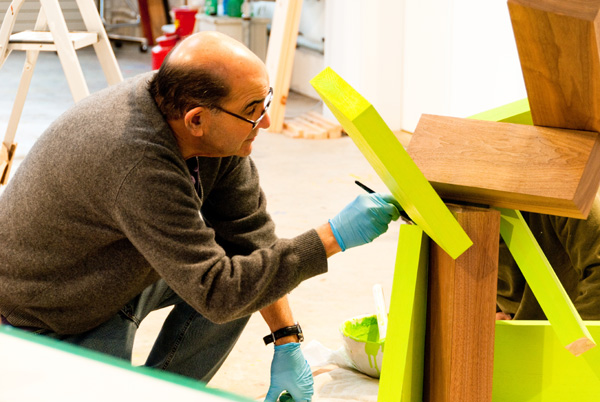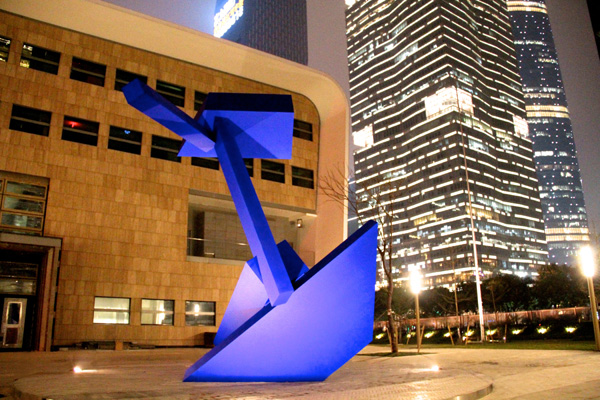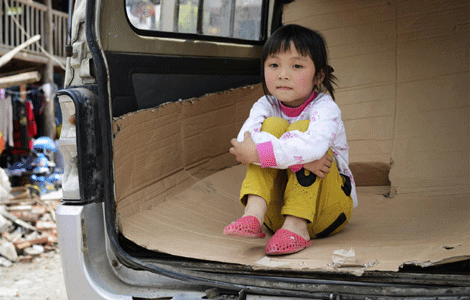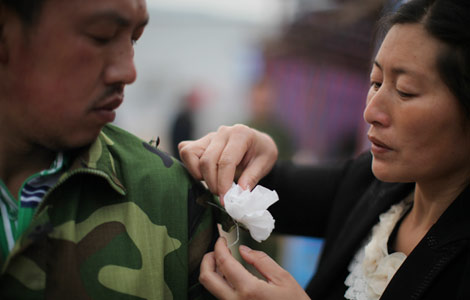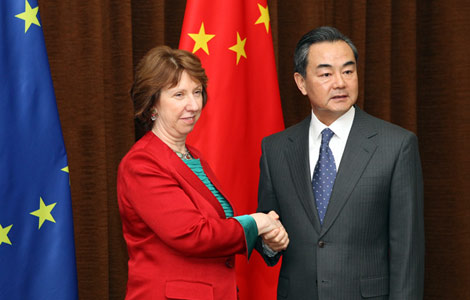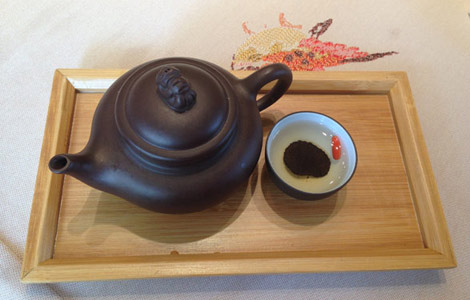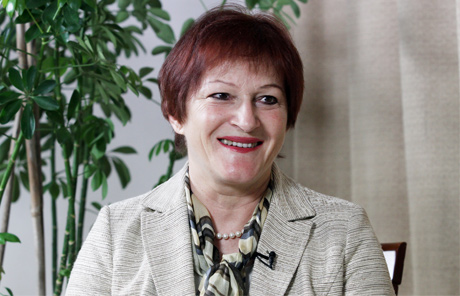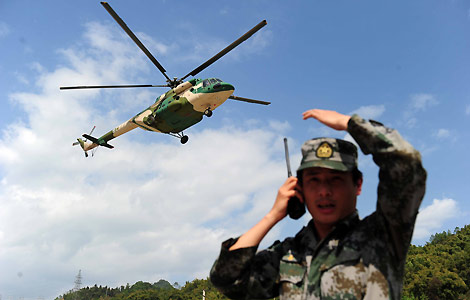It's so now
Updated: 2013-04-28 07:15
By Mike Peters (China Daily)
|
||||||||
|
Joel Shapiro says Guangzhou is growing rapidly and it was a great honor to be asked to make a sculpture in such a vibrant context. Jim McHugh / for China Daily |
|
Now is composed of six pieces of painted aluminum. Provided to China Daily |
Joel Shapiro's huge birdlike sculpture for the new US consulate in Guangzhou, Mike Peters reports, was an exercise in form and has a contemporary edge that suits the fast developing city.
When sculptor Joel Shapiro went to work designing a massive sculpture for the new US consulate in Guangzhou, he didn't conceive it as "birdlike". That's the recurring adjective when people describe the finished piece, Now, and Shapiro doesn't mind a bit.
"I can see that," he says on his return to New York after supervising installation of the huge blue piece in China. "It's perfectly OK."
"What I wanted to project was a sense of uplift - make it celebratory and a reflection of individual spirit," he says. "It's a projection of thought into form: I don't know that there is any greater, deeper meaning."
The fact that there's no overriding narrative is typical of his work. Now is composed of six pieces of painted aluminum that come together in a radical configuration but barely touch each other, another hallmark of a Shapiro piece.
At 6.7 meters the piece was "a bit" too big for Shapiro to cut and put together in his studio.
"People suggested building it in China and I'm sure it could have been done - it would have been fun to do, in fact. But I would have had to be there, and I just didn't have the time."
So Shapiro teamed up with KC Fabrications, in Gardiner, New York, and the fabrication took about nine months. After that, he toyed with the idea of hand-painting it himself.
Though he was tempted, he wasn't sure he could get the necessary adhesion, so he took advantage of new spray-paint technologies that have made it easier to get the look he wanted - paint the Pentagon has developed for military vehicles.
That included a matte finish, not glossy.
"In the past, the only good paints were shiny," he says. "With matte you read the form, shiny you read the surface. You don't want the shiny, glossy, Buick look."
Since his first exhibition in 1970, Shapiro's work has been the subject of many one-person shows and retrospectives around the US and Europe.
On April 30, FAPE, which commissioned the Guangzhou piece, will celebrate the work of Shapiro and others at a reception and dinner, where Shapiro will ceremonially present Now's design to US Secretary of State John Kerry.
Shapiro wasn't fazed when asked to create a "site-specific" work for Guangzhou, China - a place he'd never seen.
Shapiro studied what the city looked like, and consulted frequently with the building's architect, Craig Hartman of Skidmore, Owings & Merrill LLP, to integrate the work within the overall design.
"I saw models of the building at the SOM offices in San Francisco, so I felt quite comfortable with what I was doing."
That was true even when the consulate building expanded literally on the drawing board, become two stories instead of one.
Six years after the process began, Shapiro and the six pieces of his sculpture were ready to head for China, and he says he was thrilled with the result and it's high visibility on the riverbank.
"What did surprise me was the amount of light there was at night," he says, and the pale but very intense blue paint color shows up very well in the evening landscape.
"Guangzhou is a growing and changing city and it is a great honor to be asked to make a sculpture in such a vibrant context," the native New Yorker says.
That context includes Zaha Hadid's internationally acclaimed Guangzhou Opera House, which sits on the Pearl River across the street from the new consulate site. The juxtaposition prompted a last-minute adjustment in the installation plans, Shapiro says.
"In my original concept, my sculpture was situated so that it pointed at the opera house. It was an acknowledgment, pointing it out," he says. "But in Chinese culture pointing at something can be considered impolite, so we turned the piece to face another direction."
Because the consulate building won't be ready to open until later this year, there was no public event during Now's installation, which disappointed Shapiro. But he got other opportunities to interact with locals, especially art students, giving talks, one at the The Guangzhou Academy of Fine Arts and another at Times Museum.
"Clearly sculpture plays a role in Chinese culture."
Contact the writer at michaelpeters@chinadaily.com.cn.
Most Viewed
Editor's Picks

|
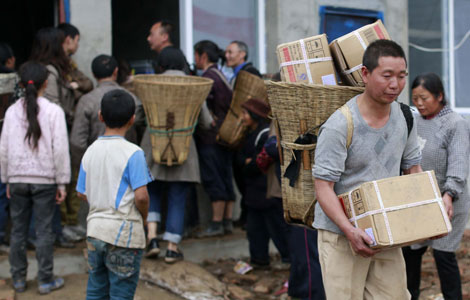
|

|

|

|

|
Today's Top News
China, EU 'to renew ties'
Life goes on after Lushan earthquake
TEDA inks investment agreement with Egyptian govt
Industries post lower profit growth
China, EU agree to beef up cooperation
China's court hears Jordan suit
Top charitable donor list published
China's retrieval of lost relics needs time
US Weekly

|

|
